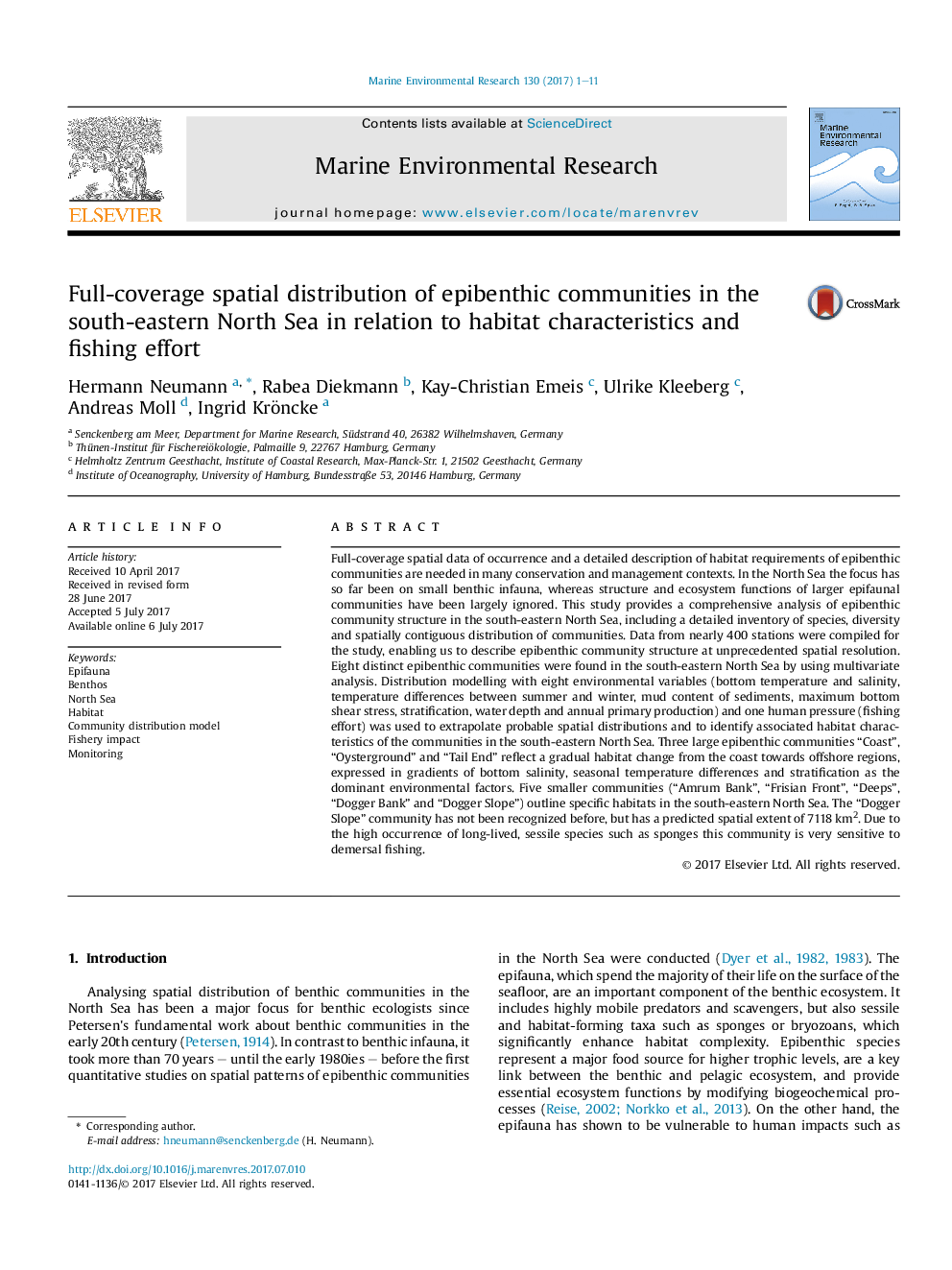| کد مقاله | کد نشریه | سال انتشار | مقاله انگلیسی | نسخه تمام متن |
|---|---|---|---|---|
| 5766137 | 1627553 | 2017 | 11 صفحه PDF | دانلود رایگان |
- A comprehensive analysis of the epibenthic community structure in the south-eastern North Sea is provided.
- Eight distinct epibenthic communities were found in the south-eastern North Sea.
- Three large epibenthic communities reflect a gradual habitat change from the coast towards offshore regions.
- Five smaller communities outline specific habitats in the south-eastern North Sea.
- The “Dogger Slope” community has not been recognized before and is very sensitive to demersal fishing.
Full-coverage spatial data of occurrence and a detailed description of habitat requirements of epibenthic communities are needed in many conservation and management contexts. In the North Sea the focus has so far been on small benthic infauna, whereas structure and ecosystem functions of larger epifaunal communities have been largely ignored. This study provides a comprehensive analysis of epibenthic community structure in the south-eastern North Sea, including a detailed inventory of species, diversity and spatially contiguous distribution of communities. Data from nearly 400 stations were compiled for the study, enabling us to describe epibenthic community structure at unprecedented spatial resolution. Eight distinct epibenthic communities were found in the south-eastern North Sea by using multivariate analysis. Distribution modelling with eight environmental variables (bottom temperature and salinity, temperature differences between summer and winter, mud content of sediments, maximum bottom shear stress, stratification, water depth and annual primary production) and one human pressure (fishing effort) was used to extrapolate probable spatial distributions and to identify associated habitat characteristics of the communities in the south-eastern North Sea. Three large epibenthic communities “Coast”, “Oysterground” and “Tail End” reflect a gradual habitat change from the coast towards offshore regions, expressed in gradients of bottom salinity, seasonal temperature differences and stratification as the dominant environmental factors. Five smaller communities (“Amrum Bank”, “Frisian Front”, “Deeps”, “Dogger Bank” and “Dogger Slope”) outline specific habitats in the south-eastern North Sea. The “Dogger Slope” community has not been recognized before, but has a predicted spatial extent of 7118Â km2. Due to the high occurrence of long-lived, sessile species such as sponges this community is very sensitive to demersal fishing.
474
Journal: Marine Environmental Research - Volume 130, September 2017, Pages 1-11
